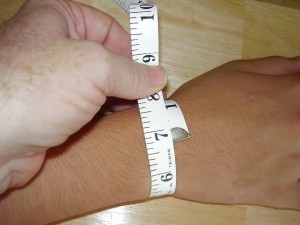By Cassey Graeff –
Bracelets, athletic bands, silly bands, and watches.
Each day a person’s eye is drawn to a wrist for different reasons thanks to accessories. But now there is a whole new reason to look at wrists.

According to Los Angeles Times, “Heart disease is the leading killer of adults in the United States, and the path to heart problems begins in childhood. But physicians don’t have an accurate way to assess which children, even the overweight ones, will be most at risk for developing heart disease.”
Scientific data has proven that the size of a child’s wrist can offer clues to their future health.
Children with larger wrist measurement have a higher insulin resistance. Insulin is a polypeptide hormone that regulates the metabolism of glucose and other nutrients. When a child has a high insulin resistance the natural insulin is less effective at lower the blood sugar causing an increase in blood glucose which may raise levels outside the normal range and cause health effects.
There is also a connection between the size of a wrist and a persons BMI (body mass index). According to medical experts, “BMI is the common acronym given to Body Mass Index, a number calculated from your weight and height that roughly correlates to the percentage of your total weight that comes from fat, as opposed to muscle, bone or organ.”
The higher a persons BMI is a higher percentage of fat is contained in the body.
According to Time.Health, “Results do not suggest that every child with thick wrist bones is at risk of insulin resistance and therefore heart disease. But the findings do suggest that among youngsters who are already overweight or obese, the easy-to-take measurement may be more effective than BMI at alerting doctors to those who may be at greater risk of developing heart problems in coming years.”
With this information parents can take a look at their child’s wrist and have a clue to whether heart disease could be a problem in their future.